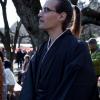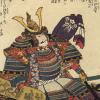-
Posts
142 -
Joined
-
Last visited
About SalaMarcos
- Birthday 03/07/1982
Contact Methods
-
Website URL
https://www.linkedin.com/in/marcos-andr%C3%A9s-sala-ivars-52958527/
Profile Information
-
Gender
Male
-
Location:
Spain
-
Interests
Tsuba - tôsôgu.
Musô Jikiden Eishin ryû iaijutsu (Yamauchi-ha Komei Jyûku)
Ryôen ryû naginatajutsu.
Kashima Shinden Jikishinkage ryû kenjutsu
Japanese art and Japanese koryû.
Fishing.
Profile Fields
-
Name
Marcos Sala
Recent Profile Visitors
The recent visitors block is disabled and is not being shown to other users.
SalaMarcos's Achievements
-
The problem, at least in Spain, is the square minds curators and law against invasive restoration. They will never let publish the blades, because for them, the blade is loosing some material. Also, they will never throw to the trash a loose putrid or eaten (by insects) tsukamaki and put one new, because you're throwing to the trash an historical part and supply with modern. They said it's like Viollet-le-Duc restoration of Carcassonne. Also they will never let clean a tsuba or menuki. I will put here two examples. 1st In the last 10 years, Spanish government with the collaboration of Japan Foundation brought to Spain a ningen kokuhō of urushi, Murose Kazumi sensei. Each time he came, gave ideas for urushi conservation, which everyone listens, but also ask for restoration, and each time they said no. So they pay for a people that come and give his expert opinion to not to be listened. 2nd Except The Vitoria and the Zaragoza Museums, the rest which have yoroi have it in a mannequin, many with the sune mistaken and even one has around the neck an old water bottle from Peru. I'm all cases the answer is...we don't change the old things, in special when comes from older collections.
-
It is what you said, specially the lack of funding and, at the same time, the excessive caution (and also arrogance) of those who have obtained the position of curator of public museums, a permanent position for life that takes years to obtain, but once you have achieved it, you stop worrying about everything.
-
Dear colleagues, I translated to English my latest Q1 article about Japanese swords in Spanish Army Museums, I hope you'll find interesting. Because this article covers both blades and tosogu, I posted here. https://www.academia.edu/129530963/Study_and_cataloging_of_Japanese_swords_in_Spanish_army_museums_GE_Conservation_Magazine_Q1
-

Ford Hallam Has Passed Away
SalaMarcos replied to zanilu's topic in General Nihonto Related Discussion
A huge loss for the tsuba world. Condolences for the family, friends and students. Thanks to his videos I could understand many things. Rest in peace sensei. -
Congratulations! I'm very interested in the two additional books as I've the first one. In fact, in that book I found some of the tsuba that nowadays belongs to some Spanish museums. Please keep us in touch regarding place to order. Best regards,
-
I will try ask the tsubakō if he agree to share. What I can say is that's a group of 3 tsuba (sorry not daishō as I said) but 3 on the same size, nadekaku gata 9x8cm if I remember well.
-
Not directly related, but since 4 years, a reknowed tsuba master in Japan is wornking in a daishô tsuba depicting the Guernika of Picasso. I hope he finsih soon, I saw it 2 years ago and, even when it's not a "traditional" tsuba, is amazing.
-
Hoy me gustaría compartir con ustedes mi última conferencia para la Universidad Ritsumeikan y la Universidad de Bucarest: Título: El valor de la concepción errónea del otro: El caso de las espadas japonesas y sus herrajes a finales del siglo XIX y principios del XX. De 1641 a 1854, el gobierno japonés Tokugawa limitó el contacto con Occidente a la Compañía Holandesa de las Indias Orientales (VOC), a través de la isla artificial de Dejima (Nagasaki). Esto terminaría con la firma del tratado Peace & Amity de 1854 con los Estados Unidos, abriendo los puertos de Shimoda y Hakodate. En los años siguientes, otras naciones como Reino Unido, Francia o España, firmarían tratados similares, provocando la apertura de nuevos puertos. A pesar de que la principal intención de las potencias extranjeras era conseguir puertos de abastecimiento en la carrera ballenera comercial, lo cierto es que pronto las ciudades que abrieron sus puertas se convirtieron en un lugar de intercambio cultural entre Japón y Occidente. Tras la caída del gobierno feudal de los Tokugawa, y la llegada de la era Meiji (1868-1912), los viajes de occidentales a Japón y viceversa se multiplicaron exponencialmente. Es en este momento cuando las mercancías japonesas vendrán a transformar la historia del arte occidental, como es el caso de los grabados japoneses ukiyo-e y su influencia en los pintores impresionistas y postimpresionistas. Sin embargo, se estaba produciendo otro fenómeno: la compra de objetos japoneses por parte de occidentales, para traer recuerdos de sus viajes a este exótico y lejano país. En este contexto, las espadas japonesas fueron algunos de los objetos más buscados por estos viajeros. Sin embargo, la concepción errónea del “otro” los llevó a desnaturalizar estos objetos, transformando el uso de varias de sus partes. Los japoneses, aprovechando este desconocimiento, comenzaron a fabricar souvenirs para turistas sin valor artístico ni monetario. Nos centraremos en dos áreas principales de producción de este producto, Nagoya y Yokohama. La compra masiva de estos objetos por parte de los occidentales, que creían llevarse un trozo de la cultura japonesa, así como su posterior revalorización (aún hoy), nos dejan aún sin conocer “lo otro”. https://youtu.be/gBjwfNqLNoE
-
Today I would like to invite you to my next lecture, registered at the International Congress of Japanese Studies of Kyōto Ritsumeikan University and Bucharest University, this Friday 31th March at 12:20 Romania time. It is completely free but you have to register in this link previously. https://docs.google.com/forms/d/1By-vdY5kNtF7Ydcz7hl5Vt7QQEutrffkeSAuIY3KewM/edit Here's the Zoom link to access, no password required. https://ritsumei-ac-jp.zoom.us/j/92724137035 Although they insist that to be sure, it is better to also register at the previous link. This is the abstract of my intervention. 1 / 1 International Symposium on Japanese Studies (Re)-imagining and (re)-translating Japanese culture Abstract. Title: The value of misconception the other: The case of the Japanese swords and its fittings in the late XIX and early XX centuries. From 1641 to 1854, the Japan Tokugawa government limited the contact with the West to the Dutch East India Company (VOC), through the artificial island of Dejima (Nagasaki). This would end with the signing of the 1854 Peace & Amity treaty with the United States, opening the ports of Shimoda and Hakodate. In the following years, other nations such as the United Kingdom, France or Spain, would sign similar treaties, causing the opening of new ports. Despite the fact that the main intention of foreign powers was to obtain supply ports in the commercial whaling career, the truth is that soon the cities that opened their doors became a place of cultural exchange between Japan and the West. After the fall of the feudal government of the Tokugawa, and the arrival of the Meiji era (1868-1912), the trips of Westerners to Japan and vice versa multiplied exponentially. It is at this time when Japanese merchandise will come to transform the history of Western art, such as the case of Japanese ukiyo-e prints and their influence on the Impressionist and Post-Impressionist painters. However, another phenomenon was taking place: the purchase of Japanese objects by Westerners, to bring back memories of their trips to this exotic and distant country. In this context, Japanese swords were some of the objects that these travelers most searched. However, the misconception of "the other" led them to denature these objects, transforming the use of several of its parts. The Japanese, made use of this ignorance, and began to manufacture souvenirs for tourists lacking artistic or monetary value. We will focus in two mayor areas of production of this goods, Nagoya and Yokohama. The massive purchase of these objects by Westerners, who believed they were taking a piece of Japanese culture, as well as their subsequent revaluation (even today), leave us still not knowing "the other".








